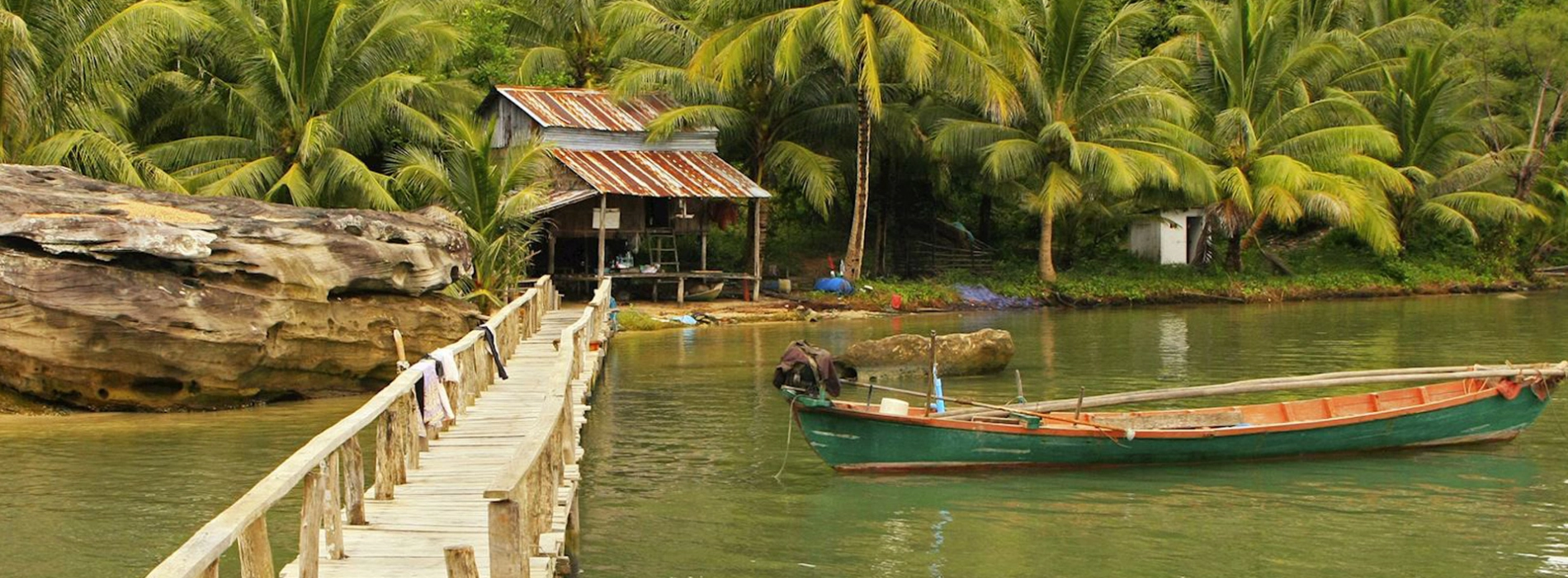Ream National Park

Ream National Park, nestled in the southwestern part of Cambodia within the province of Sihanoukville along the Gulf of Thailand, is a protected area that spans approximately 210 square kilometers. Established in 1993, the park boasts a diverse range of ecosystems, including coastal regions, mangrove forests, tropical jungles, and offshore islands. Its primary objective is to conserve the region's rich biodiversity, encompassing various plant and animal species. The park is renowned for its wildlife, featuring a variety of birds, monkeys, reptiles, and marine life. Conservation efforts are integral to the park's mission, emphasizing the protection of its ecosystems, including mangroves and coral reefs. Ream National Park offers a harmonious blend of nature and adventure, making it a notable destination for those seeking both tranquility and exploration.
In 1993, King Norodom Sihanouk appointed the establishment of Ream National Park. One distinctive feature of this national park is its surroundings, encompassed by mangrove land in inland estuaries.
Founded by King Norodom Sihanouk in 1993, this national park holds historical significance as the first in peacetime Cambodia and is notably important. Its sandy banks and forested peaks served as a strategic location for the Vietnamese uprising against the Khmer Rouge in 1979. In many respects, Ream appears to have undergone minimal change since that period. The lush forests and picturesque beaches remain largely undiscovered, with only a few villages and guesthouses situated within the park's boundaries. Despite the addition of some industrial elements, such as oil and gas fields and a substantial military base, the park's beauty persists, and traversing through it provides a genuine sense of Cambodia.
Ream National Park offers a range of attractions for visitors interested in nature, wildlife, and outdoor activities.
Jungle Trekking: Explore the park's lush tropical jungles by taking one of the available trekking trails. Guided tours often allow visitors to witness diverse flora and fauna, including various species of plants, insects, and monkeys.

Ream National Park offers various trekking trails
Boat Trips: Discover the coastal and riverine areas of the park by taking a boat trip. These excursions may lead you through mangrove forests, providing opportunities for bird watching and glimpses of marine life.

Coastal boat trips allow visitors to appreciate the park's stunning coastal landscapes
Bird Watching: Ream National Park is known for its rich birdlife. Bird watchers can spot numerous species, including both resident and migratory birds. The park's diverse habitats, including mangroves and coastal areas, attract a variety of avian species.

Ream National Park is renowned for its diverse birdlife
Fishing Village Exploration: Interact with the local fishing communities within the park to gain insights into their traditional way of life. Some tours may include visits to fishing villages where you can observe daily activities.

Approach the fishing villages with cultural sensitivity and respect for local customs
Mangrove Forests: Explore the mangrove forests within the park, which play a crucial role in the park's ecosystem. Mangroves serve as nurseries for various marine species and contribute to the overall biodiversity of the area.

Mangrove forests of Ream national park
Food: Street food and local markets are more budget-friendly, with meals costing between $2 and $5. Dining at mid-range restaurants might cost between $10 and $20 per person, while upscale dining can exceed $30 per person.
Activities: Prices for guided tours and activities within Ream National Park can vary. Boat trips might cost around $20 to $30, while more comprehensive packages including jungle trekking and wildlife exploration could range from $50 to $100 or more.
The best time to visit Ream National Park in Cambodia is during the dry season from November to April, with November to February offering cool and dry conditions ideal for outdoor activities. The wet season from May to October, especially June to September, brings increased rainfall but contributes to lush landscapes. Travelers can choose between the popular dry season for pleasant weather or the wet season for a quieter experience with occasional rain.
To reach Ream National Park in Cambodia, you typically start by traveling to the nearby town of Sihanoukville, as it serves as a gateway to the park
By Air: The nearest major airports are Phnom Penh International Airport and Sihanoukville International Airport. You can fly into either airport depending on your travel plans. From Phnom Penh, you can take a domestic flight to Sihanoukville International Airport.
By Boat: Sihanoukville is a coastal town, and some visitors choose to arrive by boat. There are boat services connecting nearby islands and coastal areas to Sihanoukville. Once you reach Sihanoukville, you can proceed to Ream National Park. Local transportation options within Sihanoukville include taxis, tuk-tuks, and motorbike rentals. Guided tours to Ream National Park may also include transportation from Sihanoukville